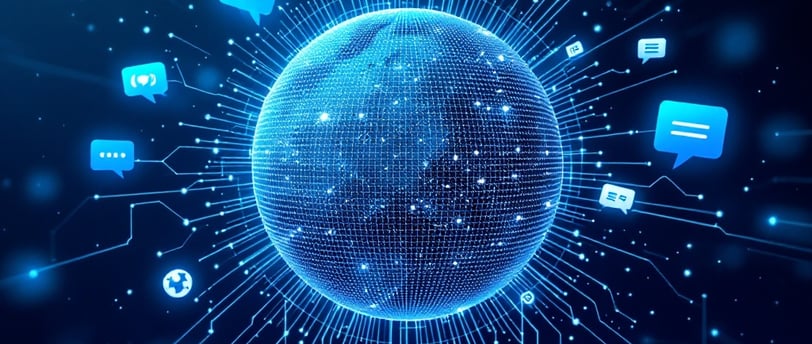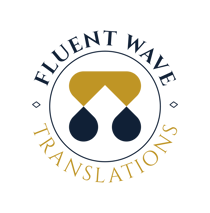The Rise of Artificial Intelligence and Neural Machine Translation (NMT): How It’s Shaping the Future of Language Services
how NMT is shaping the industry
3/18/20253 min read


The Rise of Artificial Intelligence and Neural Machine Translation (NMT): How It’s Shaping the Future of Language Services
In recent years, Artificial Intelligence (AI) has revolutionized industries across the globe, and the world of translation services is no exception. One of the most groundbreaking advancements in this field is Neural Machine Translation (NMT). But what exactly is NMT, and how does it compare to traditional methods of translation? Let’s dive into the fascinating world of AI-powered translation and explore its potential impact on businesses and individuals alike.
What is Neural Machine Translation (NMT)?
Neural Machine Translation is a form of AI-driven translation that uses artificial neural networks to predict and generate accurate translations. Unlike traditional rule-based or statistical machine translation systems, NMT analyzes entire sentences as a whole rather than breaking them into smaller parts. This holistic approach allows NMT to better understand context, syntax, and even nuances like tone and style.
Popular platforms like Google Translate and DeepL have adopted NMT technology, making it accessible to millions of users worldwide. It’s a significant leap forward in the quest to bridge language barriers efficiently and effectively.
How Does NMT Work?
At its core, NMT relies on deep learning—a subset of AI that mimics the way the human brain processes information. Here’s a simplified breakdown of how it works:
Training the Model: NMT systems are trained on massive datasets of bilingual text, allowing them to learn patterns and relationships between languages.
Context Analysis: Unlike older methods, NMT evaluates the entire sentence or paragraph, ensuring translations make sense in context.
Prediction and Output: The system predicts the most accurate translation based on its training and the input it receives.
This approach eliminates many of the errors commonly found in earlier machine translation systems, making NMT a powerful tool for businesses and individuals.
The Benefits of NMT
Neural Machine Translation offers several advantages over traditional methods:
Enhanced Accuracy: By considering context and sentence structure, NMT produces translations that are more natural and grammatically correct.
Speed: NMT can translate vast amounts of text in seconds, making it ideal for businesses with tight deadlines.
Cost-Effective: Automated translations reduce the need for extensive manual labor, lowering costs for certain types of projects.
Accessibility: NMT tools are widely available, enabling individuals and small businesses to access high-quality translations without breaking the bank.
The Limitations of NMT
While NMT is an impressive advancement, it’s not without its limitations:
Complex or Specialized Content: NMT may struggle with highly technical or specialized documents, such as legal contracts or medical reports, where precision is critical.
Cultural Nuances: AI still falls short when it comes to capturing cultural subtleties, idiomatic expressions, and tone.
Confidentiality Concerns: Using public NMT tools for sensitive documents can pose privacy and security risks.
For these reasons, professional human translators remain indispensable for projects that demand accuracy, cultural understanding, and confidentiality.
How Does NMT Impact Professional Translators?
The rise of NMT has sparked discussions about the future of professional translators. While some fear that AI will replace human translators, the reality is more nuanced. NMT is best seen as a complementary tool rather than a replacement.
Professional translators can leverage NMT to enhance their workflow, using it for initial drafts before refining the output for accuracy and style. This combination of AI efficiency and human expertise ensures the highest quality translations.
Why Human Translators Still Matter
At Fluent Wave Translations, we recognize the advancements that NMT brings to the table, but we also understand its limitations. Our certified translators bring a level of expertise and cultural sensitivity that no machine can replicate.
For example, legal and medical translations require not just linguistic skills but also a deep understanding of industry terminology and regulations. Our team ensures that every document meets these standards while maintaining strict confidentiality and data security.
The Future of NMT and Language Services
As AI continues to evolve, we can expect NMT to become even more sophisticated. Future advancements may address current limitations, such as better handling of complex texts and cultural nuances.
However, the human touch will always play a crucial role in translation services. Whether it’s ensuring compliance with USCIS requirements or capturing the emotional tone of a personal document, professional translators provide a level of care and accuracy that machines cannot match.
Conclusion
Neural Machine Translation is undeniably a game-changer in the world of language services. Its ability to deliver fast, accurate translations has opened new doors for businesses and individuals alike. However, it’s important to remember that NMT is not a one-size-fits-all solution.
At Fluent Wave Translations, we embrace the benefits of technology while staying true to our mission of providing personalized, high-quality translations. Whether you’re navigating legal, medical, or personal challenges, our team is here to help—one document at a time.
Interested in learning more about our services or how we balance technology with human expertise? Contact us today at FluentWaveTranslations@gmail.com or 904-602-9926.
